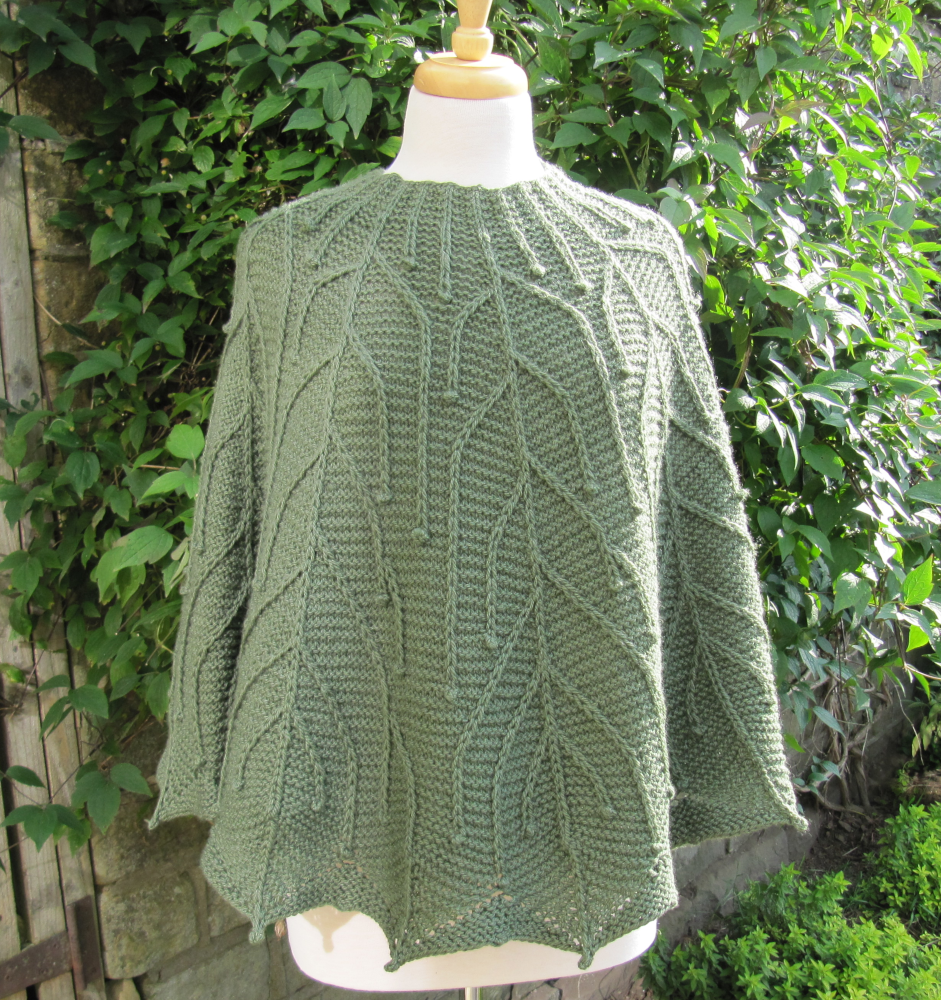Yule is the second pattern in The Wheel of the Year Collection.

Yule is a time of celebration, a time to feast on the riches the earth has provided throughout the year and stored against a harsh winter. Yule, originally a twelve-day festival, in modern times occurs on (or around) 21st December and is also known as the Winter Solstice in the Northern Hemisphere. The Holly King is now in the ascendant, and the design of the Yule Shawl reflects his reign.


Yule is a circular loose-fitting cape, knit in the round using an Aran weight yarn for warmth. The relaxed fit caters for a wide range of sizes, and allows plenty of room for arms to move. It has an all-over pattern of branches and holly berries, and an edge reminiscent of the holly leaf. The background to the pattern is garter in the round, and the branches are formed with a combination of slipped stitches, slipped travelling stitches, and knots. The travelling stitches can be worked with or without a cable needle.
Sizes given in the pattern:
teen chest size: 70 – 99 cm / 28 – 39 ¾”
medium adult chest size: 100 – 125 cm / 40 – 50”
large adult chest size: 126 – 150 cm / 50 ½ – 60”
Yarn requirements for the three sizes:
teen 750 m / 820 yds
medium adult 830 m / 908 yds
large adult 950 m / 1,039 yds
Depth of the cape is the same for all sizes, 56 cm / 22 ½”, but may be lengthened (or shortened a little) as described in the instructions.

The sample is shown in Medium Adult size; neck circumference 53 cm / 21 ¼”, length from neck to hem 56 cm / 22 ½”.
This pattern has been thoroughly and professionally tech edited, but has not been test knit except by me. Full pattern support is available by email.
In addition to the pattern instructions, I have produced a photo tutorial for making the knots on the surface and along the edge of the cape.
Yule is available from the Granary Knits Ravelry and Payhip stores.


















